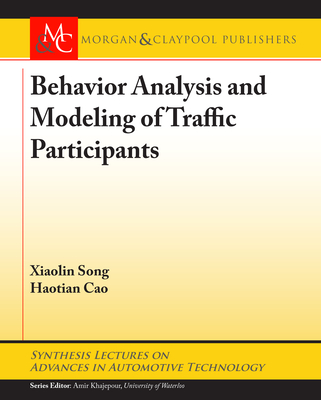商品描述
Acceptance of new technology and systems by drivers is an important area of concern to governments, automotive manufacturers and equipment suppliers, especially technology that has significant potential to enhance safety. To be acceptable, new technology must be useful and satisfying to use. If not, drivers will not want to have it, in which case it will never achieve the intended safety benefit. Even if they have the technology, drivers may not use it if it is deemed unacceptable, or may not use it in the manner intended by the designer. At worst, they may seek to disable it. This book brings into a single edited volume the accumulating body of thinking and research on driver and operator acceptance of new technology. Bringing together contributions from international experts from around the world, the editors have shaped a book that covers the theory behind acceptance, how it can be measured and how it can be improved. Case studies are presented that provide data on driver acceptance of a wide range of new and emerging vehicle technology. Although driver acceptance is the central focus of this book, acceptance of new technology by operators in other domains, and across cultures, is also investigated. Similarly, perspectives are derived from domains such as human computer interaction, where user acceptance has long been regarded as a key driver of product success. This book comes at a critical time in the history of the modern motor vehicle, as the number of new technologies entering the modern vehicle cockpit rapidly escalates. The goal of this book is to inspire further research and development of new vehicle technology to optimise user acceptance of it; and, in doing so, to maximise its potential to be useful, satisfying to use and able to save human life.
商品描述(中文翻譯)
駕駛者對新技術和系統的接受度是政府、汽車製造商和設備供應商非常關注的重要領域,特別是那些具有顯著潛力來增強安全性的技術。為了被接受,新技術必須是有用的並且使用起來令人滿意。如果不是,駕駛者將不會想要使用它,這樣一來,它將永遠無法實現預期的安全效益。即使他們擁有這項技術,如果被認為不可接受,駕駛者可能不會使用它,或者可能不會按照設計者的意圖使用它。最糟糕的情況是,他們可能會試圖禁用它。本書將有關駕駛者和操作員對新技術接受度的思考和研究成果匯集成一本編輯的專著。編輯們匯集了來自全球的國際專家的貢獻,形成了一本涵蓋接受理論、如何測量接受度以及如何改善接受度的書籍。書中呈現了案例研究,提供了駕駛者對各種新興車輛技術接受度的數據。雖然駕駛者的接受度是本書的核心焦點,但也探討了其他領域操作員對新技術的接受度,以及跨文化的接受度。同樣,還從人機互動等領域獲得了觀點,在這些領域中,使用者接受度長期以來被視為產品成功的關鍵驅動因素。本書在現代汽車歷史的關鍵時刻出版,因為進入現代車輛駕駛艙的新技術數量迅速增加。本書的目標是激發對新車輛技術的進一步研究和開發,以優化使用者的接受度;並藉此最大化其有用性、使用滿意度以及拯救人類生命的潛力。
作者簡介
Michael A. Regan is a Professor in Transport and Road Safety (TARS) Research in the School of Aviation at the University of New South Wales, in Sydney, Australia. Before that he held research appointments with the French Institute of Science and Technology for Transport, Development and Networks (IFFSTAR) in Lyon, France, and the Monash University Accident Research Centre in Melbourne, Australia. Mike's current research interests focus on human interaction with and acceptance of advanced driver assistance systems, driver distraction and inattention, use of instrumented vehicles for naturalistic observation of driving behaviour, and aviation safety. He sits on the editorial boards of five peer-reviewed journals, including Human Factors, is the author of more than 200 publications, including two books, and sits on several expert committees in transport safety. He is the 25th President of the Human Factors and Ergonomics Society of Australia. Tim Horberry is Associate Professor of Human Factors at the University of Queensland, Australia. He is also a Senior Research Associate at the University of Cambridge, UK, and before that he was at the UK's Transport Research Laboratory. Tim has published his work widely, including four books published either by Ashgate or CRC press: The Human Factors of Transport Signs (2004) and Human Factors in the Maritime Domain (2008), Understanding Human Error In Mine Safety (2009) and Human Factors for the Design, Operation and Maintenance of Mining Equipment (2010). Tim has undertaken many applied human factors research projects in Australia, the UK and Europe for organisations such as the European Union, Australian Research Council and the UK Department for Transport. Currently Tim is leading several projects in the minerals industry that are examining acceptance of new technology for mining vehicles - including collision detection systems or shovel automation. Alan Stevens is Chief Research Scientist and Research Director, Transpor
作者簡介(中文翻譯)
邁克爾·A·瑞根(Michael A. Regan)是澳洲新南威爾士大學(University of New South Wales)航空學院(School of Aviation)交通與道路安全(Transport and Road Safety, TARS)研究的教授。在此之前,他曾在法國里昂的法國交通、發展與網絡科學技術研究所(Institut Français des Sciences et Technologies des Transports, de l'Aménagement et des Réseaux, IFFSTAR)和澳洲墨爾本的莫納什大學事故研究中心(Monash University Accident Research Centre)擔任研究職位。邁克的當前研究興趣集中在與先進駕駛輔助系統的互動與接受度、駕駛者分心與不專注、使用儀器化車輛進行駕駛行為的自然觀察,以及航空安全。他擔任五本同行評審期刊的編輯委員會成員,包括《人因》(Human Factors),並且是超過200篇出版物的作者,包括兩本書籍,還參與多個交通安全專家委員會。他是澳洲人因與人體工學學會的第25任會長。
蒂姆·霍貝里(Tim Horberry)是澳洲昆士蘭大學(University of Queensland)的人因學副教授。他同時也是英國劍橋大學(University of Cambridge)的高級研究助理,之前曾在英國交通研究實驗室(Transport Research Laboratory)工作。蒂姆的研究成果廣泛發表,包括四本由Ashgate或CRC出版社出版的書籍:《交通標誌的人因》(The Human Factors of Transport Signs, 2004)、《海事領域的人因》(Human Factors in the Maritime Domain, 2008)、《礦山安全中的人為錯誤理解》(Understanding Human Error In Mine Safety, 2009)以及《礦山設備的設計、操作與維護的人因》(Human Factors for the Design, Operation and Maintenance of Mining Equipment, 2010)。蒂姆在澳洲、英國和歐洲為歐盟、澳洲研究委員會和英國交通部等組織進行了多個應用人因研究項目。目前,蒂姆正在領導幾個礦業行業的項目,研究對於礦山車輛新技術的接受度,包括碰撞檢測系統或挖掘機自動化。艾倫·史蒂文斯(Alan Stevens)是首席研究科學家及研究主任。











